Compound range pressure transmitters for measuring both vacuum and positive pressures with one device.
Compound range pressure transmitters offer a versatile solution for applications requiring the measurement of both sub-atmospheric (vacuum) and positive pressures through a single instrument. These devices are uniquely calibrated, typically with a 4-20mA output corresponding to the full negative-to-positive pressure span, but their design using a single sensing diaphragm means engineers must consider potential accuracy limitations, especially when the positive and negative pressure ranges are substantially different. With configurable symmetric or asymmetric bidirectional ranges, these transmitters are adaptable to diverse industrial and research settings, from HVAC and cleanroom monitoring to specialized process vessel and test chamber applications.
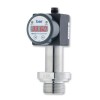 DS200P Sanitary Low Range Pressure Gauge, Switch and Sensor - All in one electronic switch, gauge and sensor designed specifically for use in the food, drink and biomedical industry for measuring process pressures.
DS200P Sanitary Low Range Pressure Gauge, Switch and Sensor - All in one electronic switch, gauge and sensor designed specifically for use in the food, drink and biomedical industry for measuring process pressures.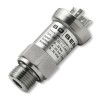 DMP331 Precision Pressure Transmitter - Stainless steel pressure transmitter with ranges from 100mbar up to 40 bar gauge or absolute. Special options for ATEX , SIL2 and compound ranges.
DMP331 Precision Pressure Transmitter - Stainless steel pressure transmitter with ranges from 100mbar up to 40 bar gauge or absolute. Special options for ATEX , SIL2 and compound ranges.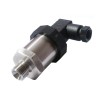 IMP Low Cost Pressure Sensor - Versatile low price pressure sensor with a wide selection of electrical and mechanical options for customisation.
IMP Low Cost Pressure Sensor - Versatile low price pressure sensor with a wide selection of electrical and mechanical options for customisation.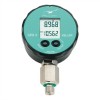 LEO3 Current or Digital Output Pressure Gauge - LCD digital pressure gauge powered externally by a 2 wire series 4-20mA current loop or a digital interface.
LEO3 Current or Digital Output Pressure Gauge - LCD digital pressure gauge powered externally by a 2 wire series 4-20mA current loop or a digital interface.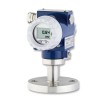 XMPi Process Plant Gauge and Absolute Pressure Transmitter - Process transmitter for measuring vacuum, steam, food, pharmaceutical, oil, gas and other pressure readings necessary for the monitoring and control of bulk production processes.
XMPi Process Plant Gauge and Absolute Pressure Transmitter - Process transmitter for measuring vacuum, steam, food, pharmaceutical, oil, gas and other pressure readings necessary for the monitoring and control of bulk production processes.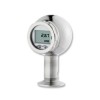 x|act i Rangeable Flush Pressure Transmitter with LCD Readout - Rangeable Pressure Transmitter with a hygienic all stainless steel construction with LCD digital readout display and optional HART communications.
x|act i Rangeable Flush Pressure Transmitter with LCD Readout - Rangeable Pressure Transmitter with a hygienic all stainless steel construction with LCD digital readout display and optional HART communications.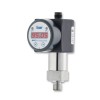 DS200 Combined Pressure Switch, Gauge and Sensor - Three in one electronic pressure switch, digital pressure gauge and pressure sensor with pressure ranges from 100 mbar up to 600 bar (1.5 to 9000 psi).
DS200 Combined Pressure Switch, Gauge and Sensor - Three in one electronic pressure switch, digital pressure gauge and pressure sensor with pressure ranges from 100 mbar up to 600 bar (1.5 to 9000 psi).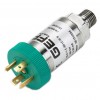 TK Industrial Pressure Transmitter - General purpose industrial pressure transmitter with a 4-20mA current loop or amplified voltage output available in range from -1 to +1 barg up to 500 barg
TK Industrial Pressure Transmitter - General purpose industrial pressure transmitter with a 4-20mA current loop or amplified voltage output available in range from -1 to +1 barg up to 500 barg
- -760mmHg to +20 kg/cm² pressure transmitter with HART coms
- -10…30 kPa g compound range inert gas pressure transmitter for ship IG system
- 100 Pa bi-directional range differential air pressure transmitter
- Solvent compatible +/-100mWG dp transmitter with PTFE seals
- Hastelloy diaphragm -100 to 50 kPa g range manometer
- Measuring HVAC plenum and sub-floor air pressure in data centers
- Monitoring hot and cold aisle containment in datacenters using a differential pressure transmitter
- Solvent tank nitrogen blanketing monitoring with all welded IS/SIL2 bidirectional pressure transmitter
Find out more about Compound Range Pressure Transmitters to determine which product options and capabilities will best meet your application requirements.
Compound range pressure transmitters are specialized instruments engineered for applications demanding the measurement of both positive (above atmospheric) and negative (vacuum or below atmospheric) pressures utilizing a single sensing element and process connection. The standard electrical output, typically 4-20mA, is precisely calibrated so that the 4mA signal corresponds to the most negative pressure value of the calibrated range, while the 20mA signal represents the most positive pressure value. This unified design simplifies installations in systems where pressure conditions can fluctuate between vacuum and positive pressures, such as in certain pumping applications, suction lines, or vapor recovery systems.
The core of these transmitters employs a single sensing diaphragm to detect deflections caused by both positive and negative pressures. While this integrated approach is space-efficient and cost-effective, it introduces inherent limitations regarding the achievable accuracy across widely disparate positive and negative pressure spans. Specifically, the ratio between the maximum positive pressure and the maximum negative pressure (vacuum) significantly influences the precision at the lower end of the overall range. For example, a compound range pressure transmitter calibrated for -1 bar to +10 bar, with a nominal accuracy of 0.25% of full span (FS), will have its accuracy for the vacuum portion (-1 bar) effectively reduced. This is because the 0.25% accuracy applies to the total span (11 bar in this case), meaning the potential error (0.0275 bar) becomes a much larger percentage of 2.75%, when considered against the smaller 1 bar vacuum segment. Design engineers and calibration technicians must carefully consider this characteristic when specifying transmitters for applications with critical low-pressure or vacuum accuracy requirements alongside much higher positive pressure capabilities, such as in certain test chambers or specialized chemical reactors.
Gauge reference pressure transmitters are commonly configured to create compound ranges. These can span from a full negative gauge pressure of approximately -1 bar (around -15 psi, representing near total vacuum relative to ambient) up to various positive pressures, such as +2 bar (+30 psi) or higher, depending on the specific model and sensing technology. For pressure ranges substantially below 1 bar (15 psi), compound range transmitters often feature bidirectionally symmetric spans, for instance, -500 to +500 mbar. Such symmetric ranges are frequently utilized in applications like HVAC systems for differential pressure monitoring across filters, cleanroom pressure balancing, or managing draft control in combustion chambers where slight positive or negative deviations from atmospheric pressure are critical. However, it is also entirely feasible to configure these transmitters with asymmetric bidirectional ranges, such as -200 mbar to +500 mbar. This flexibility allows for tailored solutions in scenarios where the expected negative pressure excursions are different in magnitude from the positive pressure excursions, for example, in certain types of leak detection equipment or process vessels that primarily operate under a slight vacuum but can experience moderate positive pressures.
